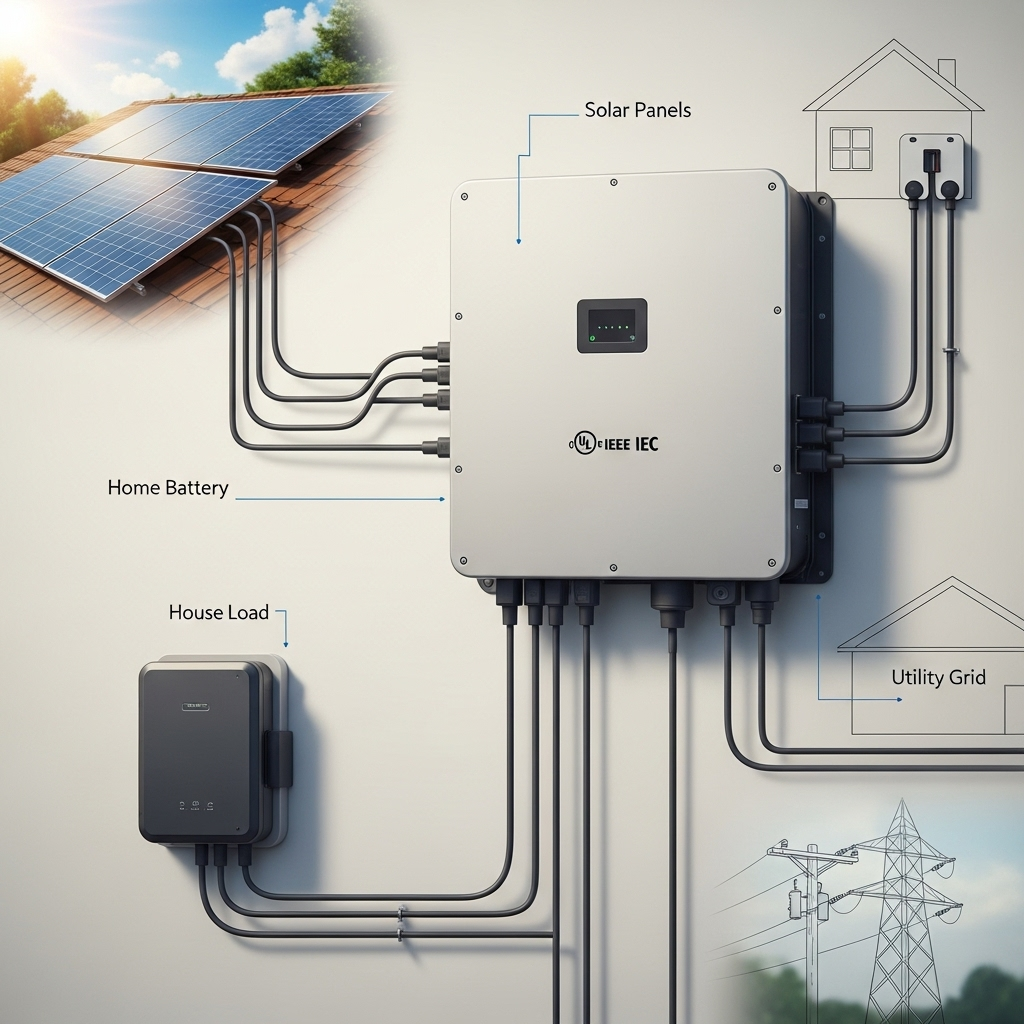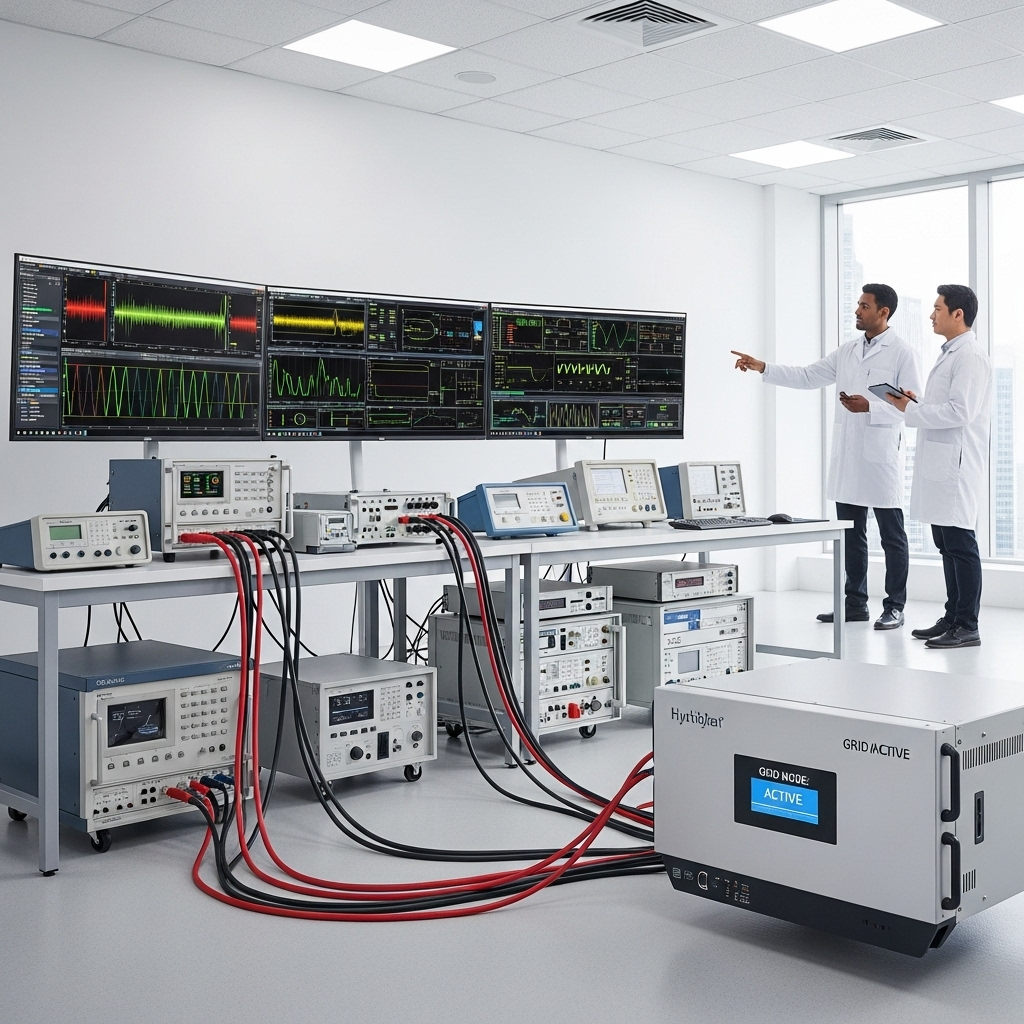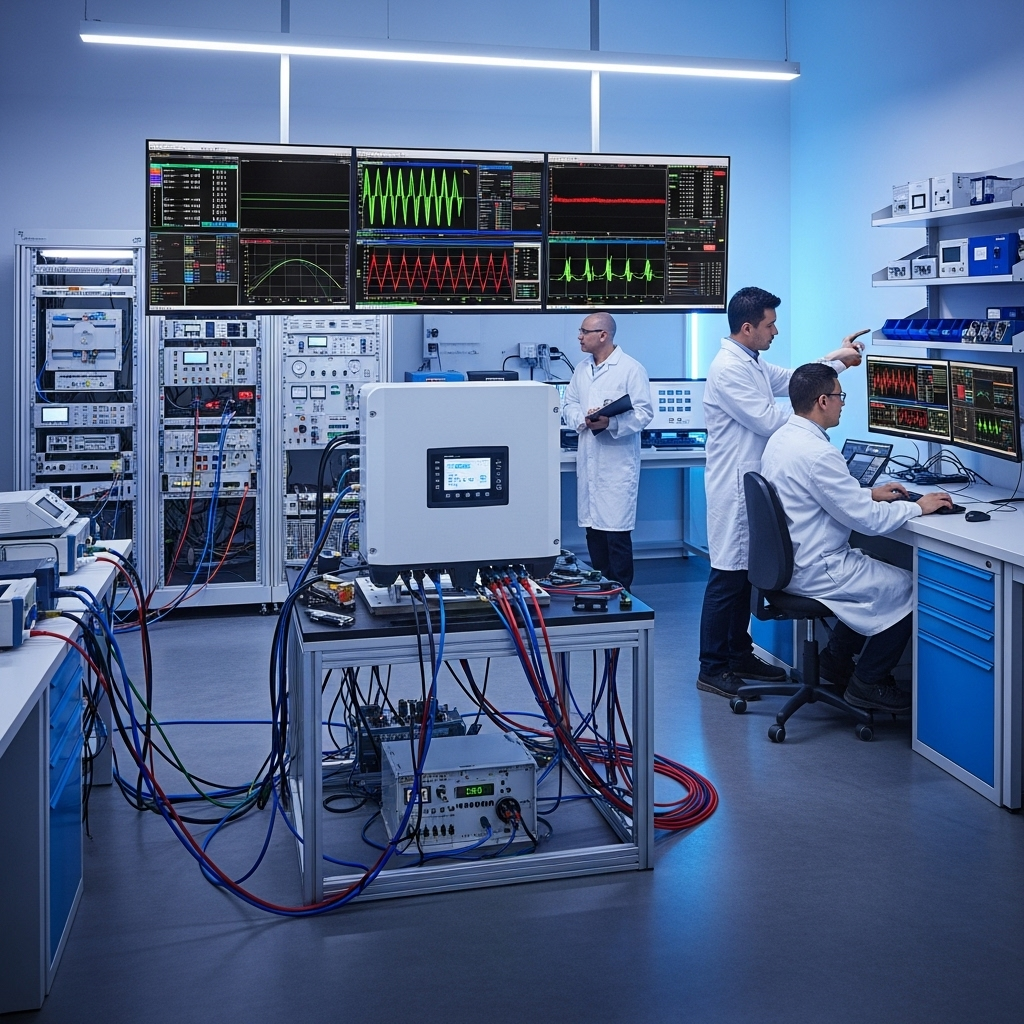Hybrid inverters are the command center of a modern solar energy storage system. They manage the flow of electricity between solar panels, batteries, the home, and the utility grid. To ensure these critical devices operate safely and reliably, a set of rigorous standards governs their design and performance. Understanding UL 1741 SB, IEEE 1547, and IEC 62109 is key to selecting a compliant and effective hybrid ESS inverter for your energy independence.

Understanding the Core Standards: What Do They Cover?
These standards are not interchangeable; they form a layered framework for safety, performance, and grid interaction. Each one plays a distinct and vital role in the certification of hybrid ESS inverters.
IEC 62109: The Foundation of Inverter Safety
IEC 62109 is an international standard that specifies the minimum safety requirements for power conversion equipment (PCE) used in photovoltaic systems. Think of it as the fundamental safety layer. Its primary goal is to protect individuals from electrical shock, fire, and other hazards throughout the inverter's lifecycle. Compliance involves rigorous testing for factors like:
- Electrical Safety: Ensuring proper insulation, grounding, and protection against high-voltage exposure.
- Mechanical Stability: Verifying the enclosure is durable and can withstand physical stresses.
- Environmental Resilience: Testing the inverter's ability to operate safely across a range of temperatures, humidity levels, and altitudes.
By adhering to IEC 62109, manufacturers demonstrate a fundamental commitment to product safety, regardless of where the inverter is installed.
IEEE 1547: The Rulebook for Grid Interconnection
IEEE 1547 is the primary North American standard for interconnecting Distributed Energy Resources (DERs), including solar and energy storage systems, with the electric grid. Its main purpose is to maintain the stability and reliability of the utility grid as more renewable energy sources are added. The standard dictates how an inverter must behave when connected to the grid, especially during abnormal conditions. Key requirements include:
- Voltage and Frequency Ride-Through: The ability to stay connected and operate through minor grid fluctuations, preventing mass disconnections that could destabilize the grid.
- Voltage Regulation: Actively helping to manage and stabilize grid voltage.
- Anti-Islanding Protection: A critical safety function that ensures the inverter stops sending power to the grid during an outage, protecting utility workers from energized lines.
As detailed in a report by the U.S. Department of Energy, standardized testing protocols for these advanced functions are crucial for both manufacturers and utilities. EERE Success Story—SunShot Funding Spurs Standardized Testing for “Smart” Solar Inverters highlights how these developments provide industry-accepted protocols to guarantee product performance and enhance grid reliability.
UL 1741 SB: The Bridge Between Safety and Grid Support
UL 1741 is a long-standing safety standard for inverters and power converters. However, the 'SB' supplement is a critical update that aligns it with the modern requirements of IEEE 1547-2018. UL 1741 SB is the testing and certification standard that verifies an inverter can perform the advanced 'smart' grid-support functions mandated by IEEE 1547. An inverter certified to UL 1741 SB has proven it can:
- Safely execute commands from the utility.
- Actively manage power quality.
- Respond appropriately to grid disturbances to enhance stability.
According to IRENA's publication Grid Codes for Renewable Powered Systems, this type of certification is a key international option for ensuring DER equipment can support grids with high shares of variable renewable energy.
How These Standards Interact for Hybrid Inverters
These three standards build upon one another to create a comprehensive certification profile for a hybrid ESS inverter. A failure to meet any one of them can result in a product that is unsafe, unreliable, or unable to be legally connected to the grid.
A Layered Approach to Certification
The relationship between the standards can be summarized in a simple table:
| Standard | Primary Focus | Geographic Scope |
|---|---|---|
| IEC 62109 | Fundamental Product Safety | International |
| IEEE 1547 | Grid Interconnection Rules & Performance | North America |
| UL 1741 SB | Testing & Certification for Grid Support Functions | North America |
Essentially, IEC 62109 ensures the inverter is built safely. IEEE 1547 defines how it must act as a good citizen on the grid. UL 1741 SB provides the official test and stamp of approval that it can do so safely and effectively.
Specific Implications for Hybrid ESS Inverters
Hybrid inverters have multiple operating modes—grid-tied, off-grid, and backup power—making compliance even more critical. These standards ensure the inverter transitions between modes seamlessly and safely. For example, the anti-islanding function certified under UL 1741 SB prevents the inverter from feeding power from the battery back to a downed grid, a vital safety feature. The performance of a certified inverter directly impacts the efficiency and longevity of the entire system. As outlined in the Ultimate Reference for Solar Storage Performance, metrics like round-trip efficiency and inverter load capacity are verified through the rigorous testing required by these standards, ensuring the product performs as specified.
The Practical Benefits of Certified Inverters
Choosing hybrid ESS inverters that meet these standards offers tangible advantages for everyone involved, from the system owner to the utility operator.
For System Owners and Installers
For homeowners and businesses, certified equipment provides confidence. It signifies that the product has been independently tested by a Nationally Recognized Testing Laboratory (NRTL) to meet established safety and performance benchmarks. This often simplifies the permitting and inspection process, as local authorities and utilities require these certifications for interconnection approval. In some cases, eligibility for financial incentives and rebates is tied to the use of certified components.
For Grid Operators and Utilities
For utility companies, the widespread adoption of inverters certified to UL 1741 SB is transformative. It turns thousands of distributed energy systems into a coordinated network of assets that can bolster grid stability. The research that led to these standards, such as the work that enabled 2,500 solar energy systems to connect to Hawaii’s electric grid, demonstrates how smart inverters can help manage challenges like over-voltage and allow for much higher levels of renewable energy penetration.
A Final Look at Compliance
The landscape of energy is shifting toward a more distributed and intelligent grid. Hybrid ESS inverters are at the heart of this transformation. The framework provided by IEC 62109 for safety, IEEE 1547 for grid rules, and UL 1741 SB for performance verification is what makes this future possible. Investing in a fully certified hybrid ESS inverter is a foundational step in building a solar and storage system that is not only powerful but also safe, compliant, and ready to support the grid of tomorrow.
Frequently Asked Questions about Inverter Standards
Is an inverter compliant with IEEE 1547 the same as being certified to UL 1741 SB?
No. IEEE 1547 is the standard that defines the performance and functional requirements. UL 1741 SB is the test procedure and resulting certification that proves an inverter meets those requirements. You can think of IEEE 1547 as the rulebook and UL 1741 SB as the final exam that grants the license.
Do these standards apply to off-grid inverters?
These standards are primarily for grid-interactive systems. IEC 62109 covers general safety principles that are relevant to many inverter types, including off-grid models. However, IEEE 1547 and UL 1741 SB are specifically for inverters designed to connect to the utility grid. Purely off-grid systems are governed by different sets of codes, such as those found in NEC Article 710 for Stand-Alone Systems.
My inverter has an IEC 62109 certification. Can I connect it to the grid in the U.S.?
Not based on that certification alone. While IEC 62109 is a crucial international safety standard, utilities in the United States will also require proof of compliance with IEEE 1547, which is demonstrated through certification to the UL 1741 standard, including the SB supplement for modern inverters.
Why were these standards updated so significantly?
The rapid growth of solar and energy storage required inverters to evolve from simple power converters into sophisticated grid-support devices. The updates, especially IEEE 1547-2018 and the creation of UL 1741 SB, were necessary to manage grid stability as millions of new energy sources are connected. As noted in the IRENA report on Quality infrastructure for smart mini-grids, robust standards are a necessary step to develop national energy infrastructure.
Where can I check if an inverter is certified?
Reputable manufacturers will clearly list all relevant certifications on their product datasheets and websites. For independent verification, you can consult the public directories of the certification bodies that performed the testing, such as UL, CSA Group, or Intertek.





Leave a comment
All comments are moderated before being published.
This site is protected by hCaptcha and the hCaptcha Privacy Policy and Terms of Service apply.